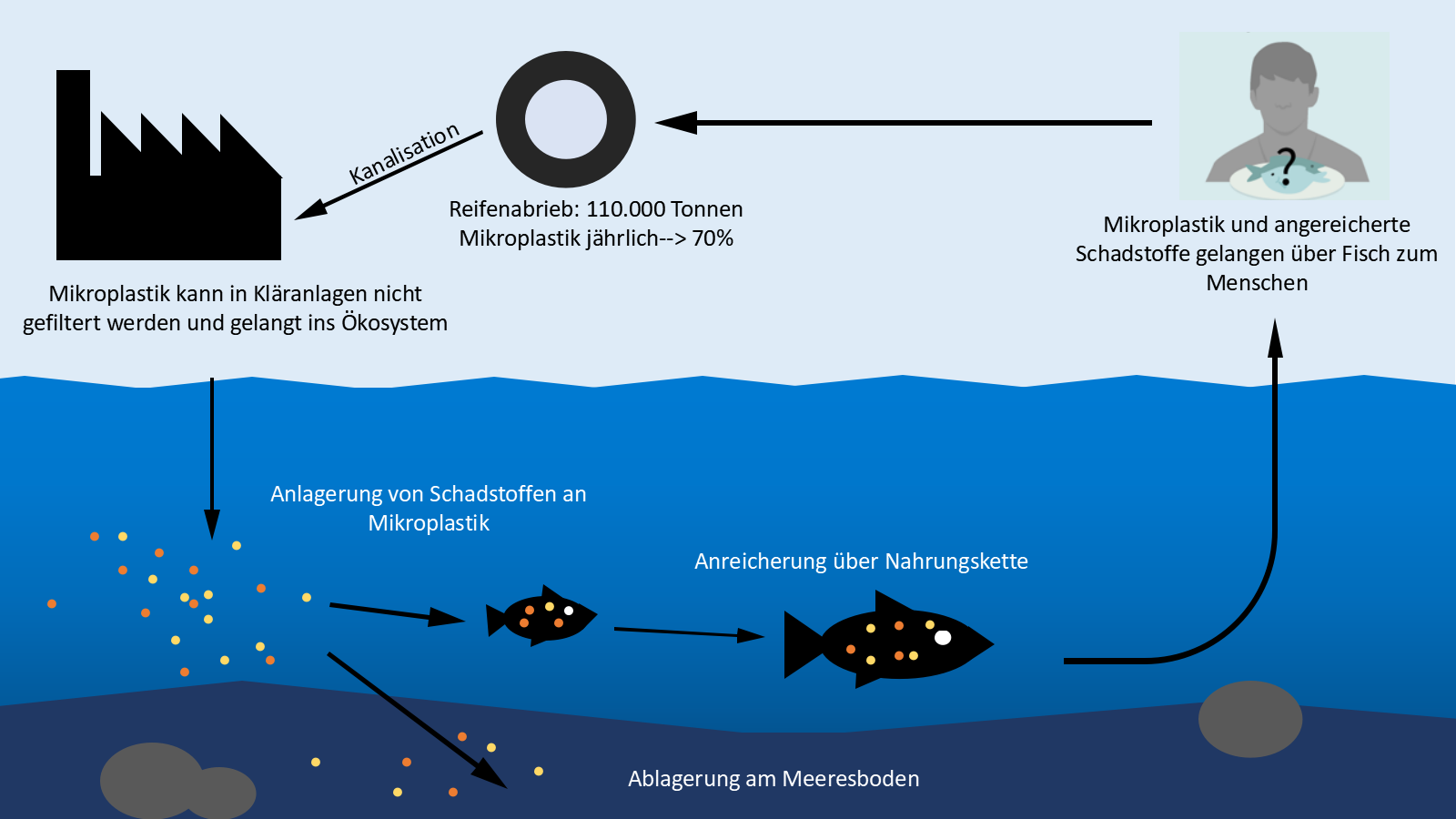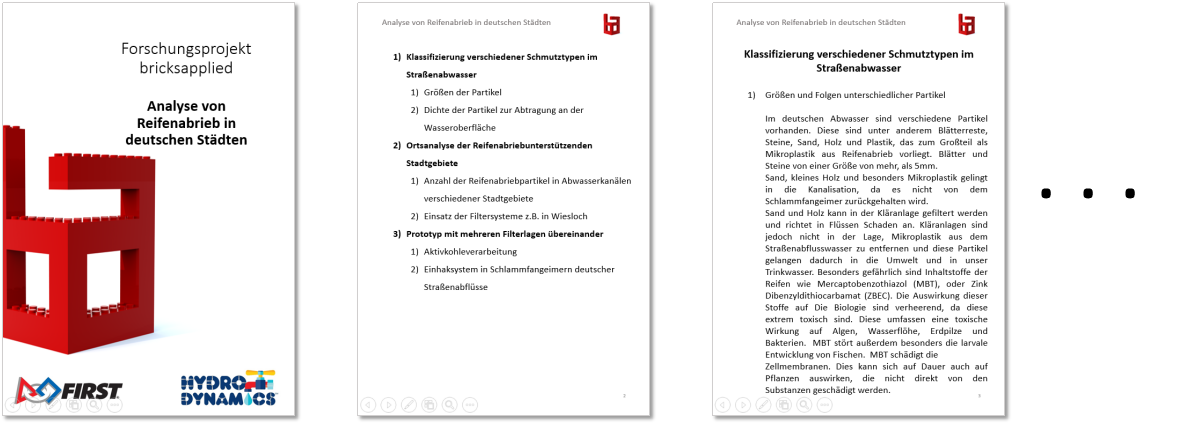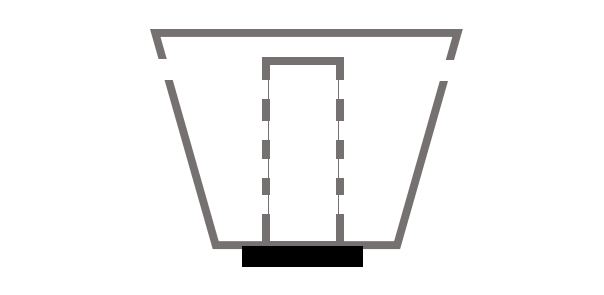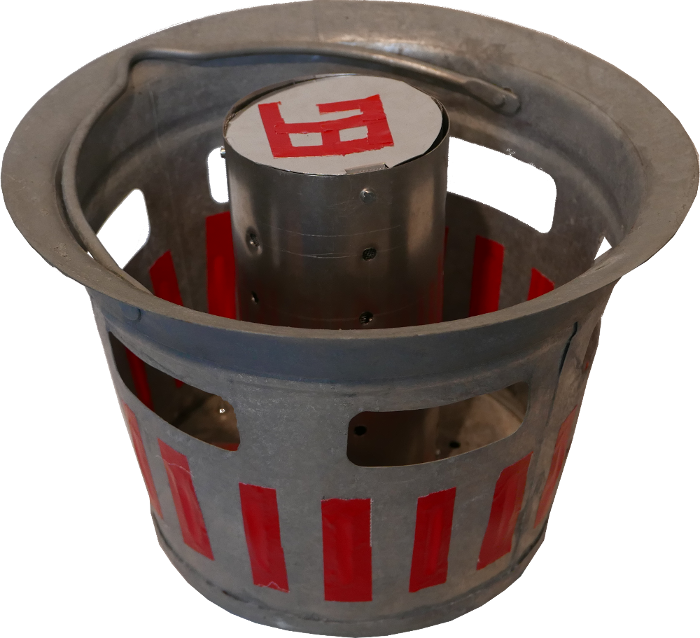Origin
Microplastics originate from a process where so-called macroplastics erode and form extremely small plastic beads which can be smaller than 5 micrometers. These particles get into the sewer system and from there into the ocean and water circuit. Due to their small size, microplastic particles have a relatively large surface which can be easily enriched with pollutants. Finally these dangerous micro-beads are absorbed by the ecosystem. So in the end we eat microplastics enriched with dangerous chemicals.
Spread
The macroplastics which later form microplastic particles consist largely of plastic bottles and bags which get into the water by careless people throwing them away. However, this factor is very hard to control because it is difficult to change the people’s morals. Tire abrasion, on the other hand, forms microplastics too and is an even larger problem because it cannot be filtered by purification plants. More than 110,000 tons of tire abrasion get into the ecosystem every year in Germany alone. But those particles are just discharged into the sewer system through road gullies.

The circulation of microplastics – The rubber from our wheels ends on our tables
Impact
There are many particles in the German street water. Some of them are leaves, stones, sand, wood and plastic which consists manly of microplastics from tire abrasion. Leaves and stones smaller than one centimeter get into the sewer system because they are not held back by normal catchment buckets. Purification plants can filter sand and wood, but they are not able to stop microplastics, so these particles get into the environment. The most dangerous ingredients of microplastics formed by tire abrasion are Mercaptobenzothiazole (MBT) or Zinc Dibenzyldithiocarbamate (ZBEC). Their impact on the environment is terrible because of the toxic effect on seaweed, water fleas, fungi and bacteria. MBT is dangerous for the larval development of fish and also damages cell membranes.
Existing Solutions
One of the existing solutions consists of large ships pulling nets to fish out macroplastics and hence stop the formation of microplastics. But this is very expensive and also removes plankton from the ocean.





